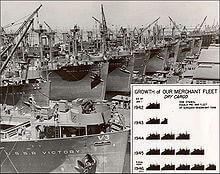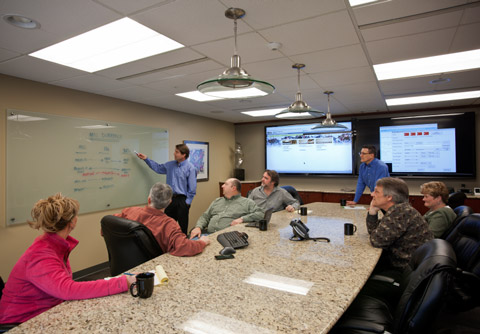
Brief History of SAI and How BSC Came To Be
The story of SAI and eventually BSC began in Evergreen, Colorado in the spring of 1981.
At that time a group of friends came together: David Young man, Jim Haxton, Roger Warnock, and myself John Underwood. Based on recent experiences we had working with a recycling company in Detroit, Michigan, we met to discuss the possibility of forming a new company. Its purpose would be to provide business systems to the industrial recycling industry.

By 1981 the industrial recycling industry had been around for many decades. However, for a number of economic and social reasons, we all shared a belief that this industry was headed for some dramatic changes. We anticipated that successful companies in this sector would be growing rapidly and that their business systems requirements would become increasingly more sophisticated.
Another key belief we shared was that this industry was truly unique and standard business systems simply would’t address its needs. We felt this presented a perfect opportunity to form a software development company to fill this void.
With some concern that the high altitude might be affecting our judgment, we eventually reached a unanimous decision and decided to pursue this newfound opportunity.
With very little in the way of collateral, but with an over abundance of enthusiasm, we founded Systems Alternatives International, (SAI) in the summer of 1981.

Since three of us were already living in Northwest Ohio, we convinced David to move from the mountains and join us. We quickly hired our first employees and leased office space in a new business center in Toledo, Ohio.
Even before the office was opened, the technical staff, which included everyone but myself, began the process of acquiring and assembling the equipment and software necessary to begin the development of our anticipated applications.
I was then tasked to find a recycling company that was willing to partner with us and become our first client. So, with nothing but concepts and ideas to sell, I began my search.
Late in the summer of 1981, we were fortunate to partner with our first client: National Metal and Steel (NMS).
Located in the Port of Los Angeles on Terminal Island in California, NMS was not only the largest exporter of ferrous scrap metal on the west coast, their facility was one of the highest volume ferrous scrap yard in the world.
To fill the cargo holds of the numerous ship loads of ferrous scrap they exported each month, they also operated one of the largest shredders in the world. They purchased a great deal of processed scrap domestically as well. At that time they operated three inbound truck scales that received an average of 750 to 850 semi-truck loads of processed and non-processed scrap every day.
The opportunity to develop applications to handle this extraordinary volume of materials taught us a great deal.
We were fortunate to have secured NMS as our first client. Not just because of the significant role they played in the recycling industry at the time, but also due to the unique experiences the company provided us in developing our applications.
Additionally, NMS generated a great deal of material from their ship dismantling operations, which were also located on this site.
Their shipbreaking operation facility was the final destination for many famous decommissioned United States Navy ships and because of these operations, the NMS lunchroom was filled with ship memorabilia. I will always remember discovering a plaque from a ship my father served on during WWII, the USS Hudson DD 475, while having lunch in on site one day.
Besides the many famous ships that were recycled by NMS, they were located at the historic site where the California Shipbuilding Corporation built 467 Liberty and Victory ships during World War II, including Haskell-class attack transports.

We began work on the NMS system in September of 1981. Over the next eighteen months our staff of six worked with NMS to create a specialized business system that handled their industry specific requirements.
The system we created to meet NMS’s operational business requirements represented a fragment of the diverse systems capabilities in use by SAI clients today, it was however the foundation for all those that followed.
NMS continued to rely on their SAI system until January 1986. At this time they were forced to cease operations due to a harbor expansion project.
We will always be grateful to NMS and their staff for providing us with the opportunity and means to develop our company and follow our dream.
Ironically, today SA Recycling (SA) now operates on the old NMS site, and they process and export both ferrous and non-ferrous materials from this location.
It is once again one of the highest volume facilities in the world. And SA utilizes the “CRES” SAI business system to run not only this port location, but also their 80 plus facilities throughout the United States.
Following the completion of the NMS system, SAI enjoyed steady growth and continued to develop increasingly sophisticated applications for a growing client base.
By 1990 we had over forty clients and our staff grew to over thirty-five people. To better accommodate the business we moved to larger facility in nearby Maumee, Ohio.

The company continued to prosper through the 1990’s. As we approached the millennium, we made a change in the way we designed and developed solutions.
I believe this fundemental change was the key to our success going forward, and the shift set us apart from all other competitive solutions.

We determined that we would no longer design new systems solely with our internal resources. For every major new application we considered developing, we began the practice of inviting a small group of related experts from our client base to participate in the design process.
Initially this new concept was not well received and was met with resistance by our clients. The concerns were mainly centered around clients being uncomfortable sharing concepts and ideas with their peers.
In spite of this initial uncertainty, we continued to encourage the use of the outside experts and eventually we were able to convince a number of clients to participate. Over time, the reluctance diminished as the results of these collaborative design efforts produced solutions that were far superior to anything we had produced before.
This method of design proved so popular that we soon had to set limits on the number of client participants utilized per project.
Many of the most sophisticated systems and specialized analytical applications came from ideas and concepts our clients brought forward during this collaborative process.
In 2006 we were presented with an opportunity to use our expertise to enter into a new market when Rich Brady, VP Raw Material Procurement and Bob Francis, CIO of Steel Dynamics (SDI) approached us.
We had previously worked with Rich when he was with the David J. Joseph Company (DJJ). Rich and Bob were interested in recruiting us to create a solution for SDI to assist them in managing all the processes related to the procuring, inventorying, and consuming of raw materials for SDI’s EAF steel mills.
Given their backgrounds, they were keenly aware of the fact that ERP solutions fell well short of providing solutions for managing the unique requirements necessary to supervise their raw materials. They were also aware that the cost of raw materials represented more than 50% of the cost of finished steel.
Recognizing these two facts they knew there were multiple opportunities to improve their process and generate ongoing saving by lowering their cost per ton for raw materials. Even minor reductions of these ongoing costs through better business practices would return substantial dollars to their bottom line.
We worked with SDI and developed a complete raw material management system utilizing the technology and concepts learned from developing solutions for the recycling industry. The systems we developed are still in use today at all SDI mills.
Largely through these efforts, SAI went on to create a commercial specialized raw material procurement application, which was marketed under the brand name IMPACT and is now available through Brady Recycling Solutions.

In 2007, SDI acquired OMNI Source (OMNI), one of North America’s largest scrap recycling companies. In 2010, SAI was awarded the contract to implement the CRES system for OMNI. Today the SDI/OMNI systems share transactional data providing both companies with even more operational efficiencies.
As we continued into the new decade, many of SAI’s clients were active participants in the consolidation that took place in the recycling industry. As a result, many of our clients grew to become publically traded multi-national organizations boasting multi-billion dollar revenues.
We were elated by the successes many of our clients were enjoying and were grateful to have been able to play a small role in their accomplishments.
We realized, however, that their success also brought with it concerns about their reliance on operating their businesses using systems provided by a small company in Maumee, Ohio.
In the summer of 2011, a company named Brady Plc approached us as they were interested in discussing the possibility of acquiring SAI. While we had been discussing potential business transition plans, our projected time frames were centered on 2020 and beyond. Regardless, we agreed to meet with Brady in August of 2011.
While the meeting went well and we all agreed Brady appeared to be a good fit for a number of reasons, we didn't engage with Brady at that time.
Brady was persistent and asked to re-engage in discussions in August of 2012.
Since our first meeting, we had done quite a bit more research on Brady and had become more comfortable with the company based on what we had learned.
They were publically traded which would provide the financial visibility our clients were asking of us. They had a healthy balance sheet, which we felt would also offer a level of comfort to our clients and staff, if we were to move forward.
From a synergy perspective, they were comprised of various business units engaged in software development that offered specialized solutions to specific industries. With the exception of the energy group, all of the other units appeared to offer complementary solutions to ours, many of which related to the metals industries.
In the fall of 2012, we met with Brady numerous times and traveled to their offices in London and Cambridge.
After a lot of deliberation, we felt selling to Brady would be the best way to insure the longevity of SAI for our valued clients and staff.
We completed the successful sale of SAI to Brady Plc in November of 2012.
Initially, Brady kept all staff in place and asked me to stay on and serve as the Group CEO. I accepted and remained in this position until July 1, 2016, when I left to pursue other interests.
In August of 2016, I formed a new organization: Beyond SAI Consulting LLC (BSC). I choose the name to imply both a new beginning, and also my desire to continue to use the many experiences the recycling and steel industries have provided me.
I sincerely hope this overview provides some insight for the basis for forming BSC. We would would be grateful to have the opportunity to answer any questions you may have.
